Today we are going to continue analyzing the true story of another of the characters in the Vikings series. , without a doubt one of the most attractive in all aspects.
If a few days ago we dedicated an article to Ivar the Boneless , the most famous and cruel son of Ragnar Lodbrok , today it is the turn of the warrior Lagertha , who was the wife of the protagonist but she managed to transcend that condition to carve out a name and a biography of her own.
When we say true history, perhaps it should be put in quotation marks, since the references we have of these characters are those provided by the sagas , whose absolute veracity is doubtful when combining real events with other legendary ones.
The sagas are to the Scandinavian medieval world what the chronicles and the cantars de geste to the rest of Europe:they tell the historical events of a region using characters that in some cases really existed and in others did not, just as the situations they live in may be more or less close to reality, all in order to achieve make the story more engaging. Something logical if one takes into account that, as some experts believe, most of them were written expressions of previous legends transmitted orally and therefore much shorter.
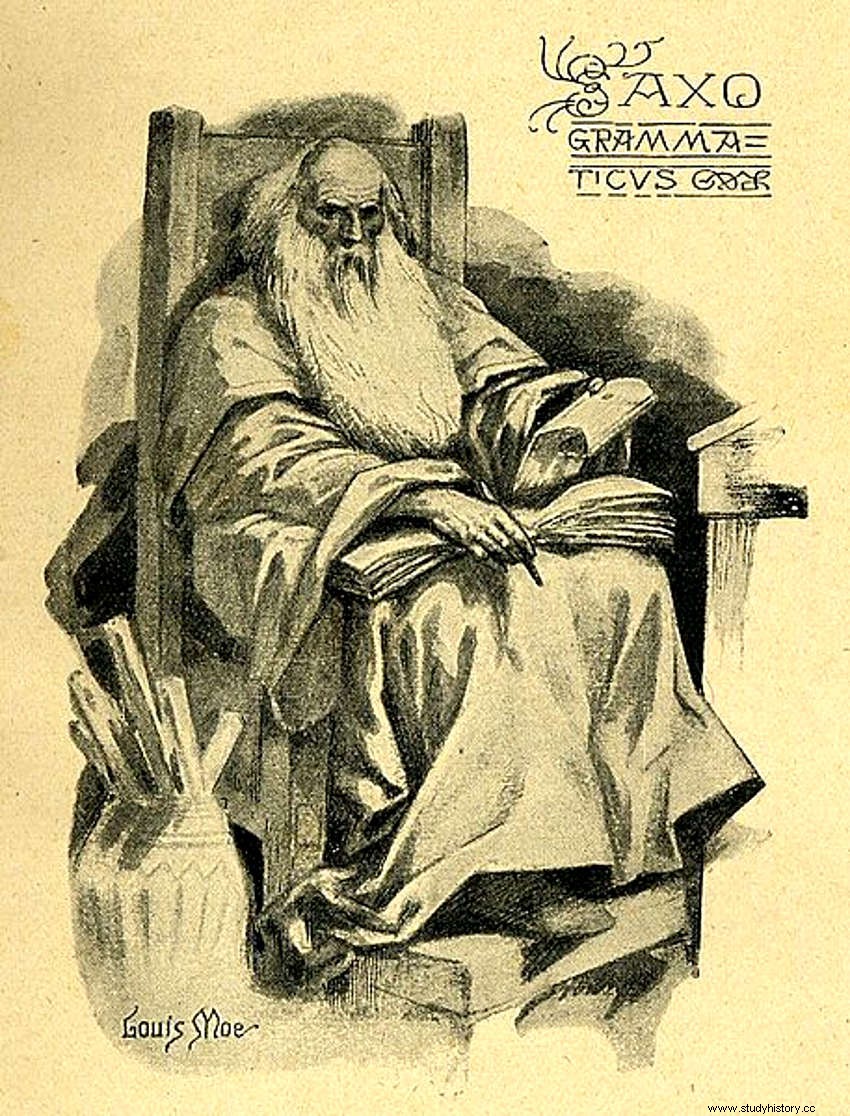
In the case of Lagertha, the saga that extends the most about her is the one titled Gesta Danorum , attributed to a twelfth-century skald named Saxo Grammaticus .
The skalds were the Nordic version of the troubadours and Grammaticus, who was Danish despite his name (Saxo means Saxon and Grammaticus was the name used later to designate the masters), like many others, hardly a meager handful of data :that he could have been born in Zealand (the largest island of what is now Denmark), that he knew Latin and knew the classics very well for having studied abroad -perhaps in France-, that he became a priest and that part of his saga, the one dedicated to Prince Amleth, is a clear precedent of the story of Hamlet.
The Gesta Danorum o Danish History consists of sixteen volumes in Latin prose with interspersed poems . The first nine volumes deal with Norse mythology while the last seven are medieval history. However, it must be taken into account that most of the originals were lost and what we have today are copies and transcriptions , except for the four fragments kept in the Royal Library of Denmark:those from Angers (written in addition to his own handwriting), Lassen , Kall-Rasmussen and Plesner .
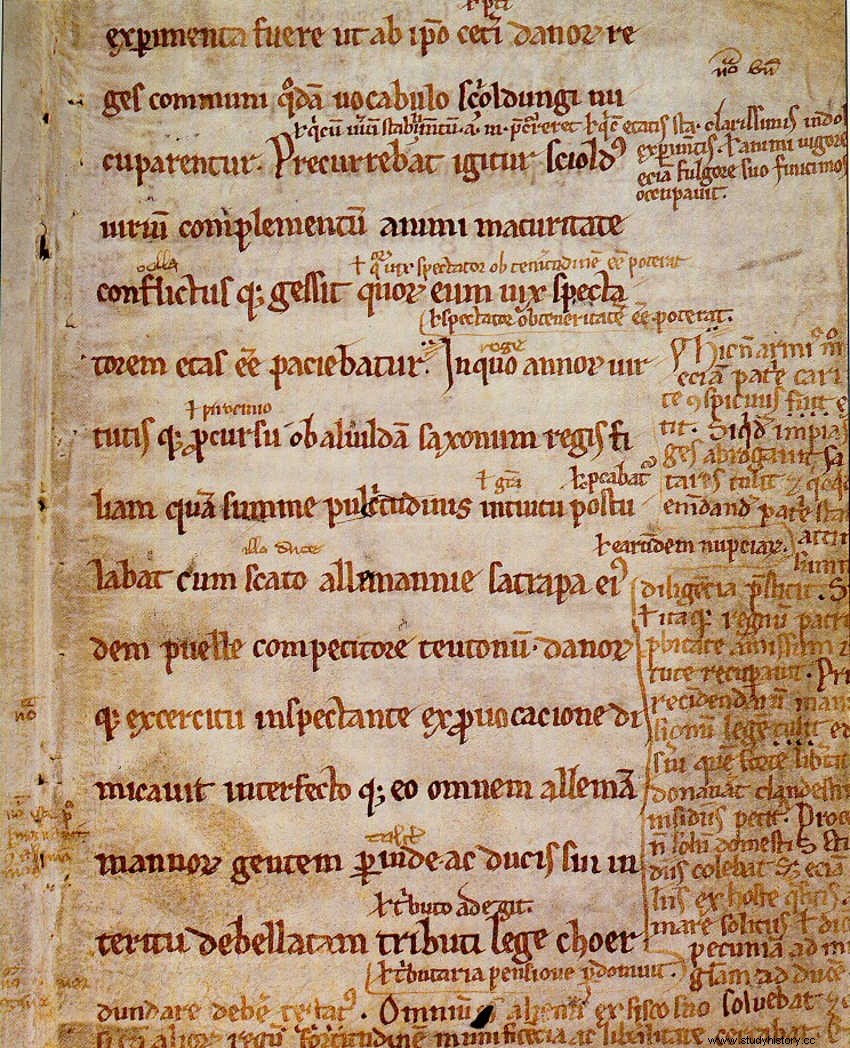
Well, it's in the ninth book (9.4.1–9.4.11) where the text dedicated to Lagertha (or Lathgertha or Lagertha, as she is also often known) can be found, where she appears with attributes that are quite reminiscent of those of the Amazons of classical mythology, although combined with Nordic and, especially, Icelandic elements; Let us remember that Saxo Grammaticus had received training of this type and that he even latinized the name of the character from the original Norse, Hlaðgerðr (Hlagerd).
According to the Gesta Danorum , when Frodo (or Frø), chieftain of the Swedish suiones, invaded Norway and killed Siward, his jarl (Viking nobility title translatable by count), Ragnar Lodbrok gathered his men and set out there to avenge that crime, since Siward was his grandfather.
Upon arrival it was found that Frodo had humiliated the women of the royal family by forcing them to work in a brothel but some, aware of Ragnar's expedition, escaped and dressed in men's clothing took up arms to fight by his side against the invader.
Outstanding among them, for her courage and skill as a warrior, was a maiden named Lagertha:«An amazing and prepared skjaldmö who, as a woman, had the courage of a man, fighting at the forefront among the bravest, with her long loose hair on the shoulders. Everyone marveled at her insurmountable feats, her sword over her head betrayed her status as a woman » .
Grammatico's quote reveals a certain machismo typical of his time and of his religious status (from his point of view it had to be Christianity that brought order to those lands of female warriors and paganism), but what is interesting is that it identifies the character like a skjaldmö :a shieldmaiden according to the tradition of Nordic and Germanic mythologies, in which that figure would reach a semi-divine degree with the valkyries , the dísir or minor deities led by the goddess Freya and who in Vingólf, one of the abodes of transit to Valhalla, dealt with the restoration of warriors fallen in battle before their encounter with Odin.
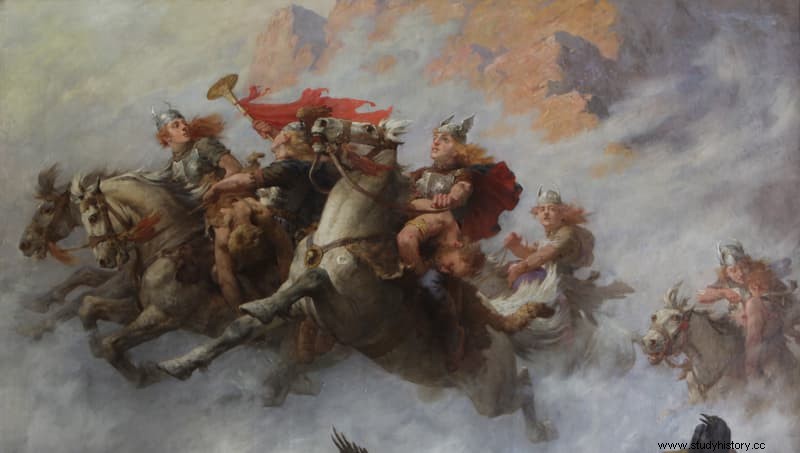
Of course, Ragnar Lodbrok could not help but be impressed with the courage of Lagertha, whom he courted. But, despite the interest shown by her, he had to overcome an unexpected test, since she had put a bear and a large hunting dog guarding the door of her house, preventing her from entering.
Ragnar killed the plantigrade with his spear and then strangled the dog, thus being able to access and ask for her hand to that extraordinary woman whom he eventually married and had a son, Fridleif, and two daughters whose names are unknown. However, the marriage, which was established in Denmark, was short-lived. Ragnar divorced to marry Thora Borgarhjört (Þóra Borgarhjǫrtr), daughter of Herrauðr, jarl from Götaland (a region of Sweden).
Lagertha returned to her land but, despite her separation, both maintained a good relationship and that is why when the civil war broke out, she returned from Norway in command of a fleet of one hundred and twenty ships to support him.
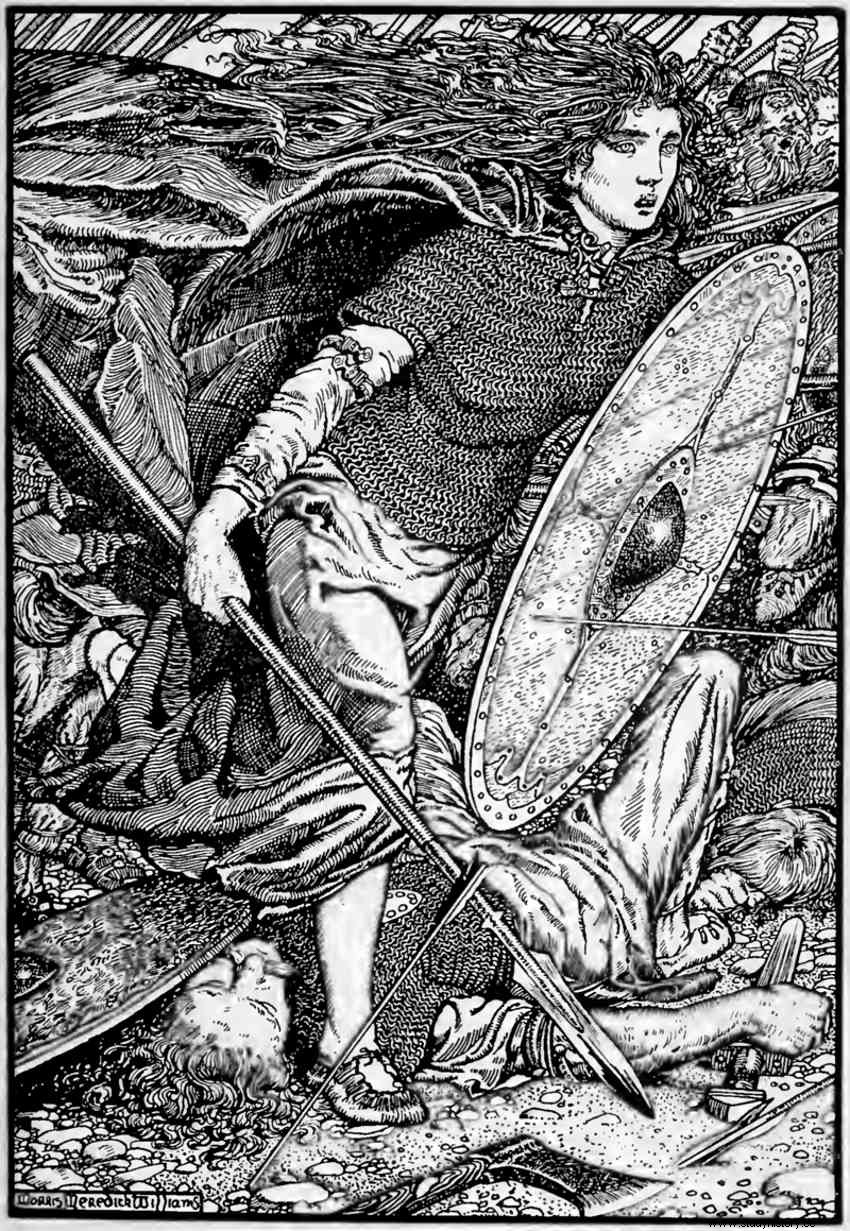
In fact, their collaboration was essential in the battle of Laneus because his proverbial courage served as an example to the troops and also, in a clever tactical maneuver, he surrounded the enemy attacking him from the rear when things were worst, by weakening the lines when one of Ragnar's sons had been wounded; Grammarian says that she flew over her opponents , thus resembling her again with a Valkyrie.
Then, solved the situation, Lagertha returned to Norway. There she had a confrontation with her husband (she had remarried) and she took advantage of the degraded marital situation to kill him and call herself jarl instead of her: "He usurped his name and his sovereignty -says Grammaticus, once again showing her misogyny-hers, because this presumptuous lady thought that it was more pleasant to govern without her husband than to share the throne with him ».
The truth is that there are other references to this heroine apart from those of the Gesta Danorum , although more concise and somewhat confusing because they identify it with other names. For example, in the Skjöldunga saga , which tells the story of the Danish kings of that dynasty and maintains a certain relationship with the work of Grammaticus; In it appears Hlaðgerðr (the original name that we mentioned before), ruler of Hlaðeyjar, who sends twenty ships to the aid of King Halvdan Frodesson, legendary monarch of Zealand.
This interpretation maintains links with another in which it is assimilated to Thorgerd (Þorgerðr Hölgabrúðr), a Norse divinity who would have been humanized to become the wife of Haakon Sigurdsson, who ruled Norway between 975 and 995; as this one resided in Hlaðir , hence the name of Hlaðgerðr.
There is the additional circumstance that Gaulardal, that is, the valley of Gaular, where Grammaticus says that Lagertha lived, was a center of Thorgerd worship and, in fact, that chronicler's description of the character coming to Ragnar's aid with his hair in the wind coincides with that of the goddess in the Flateyjarbók , a medieval Icelandic manuscript also known as the Codex Flateyensis .
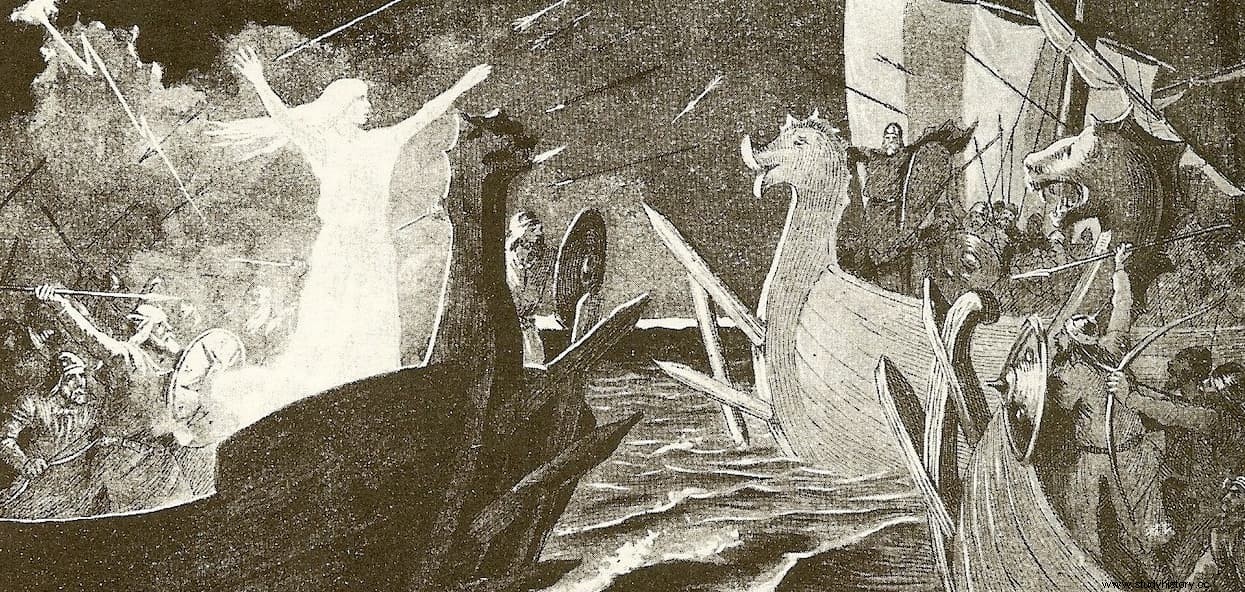
Citing sources, we must not forget the three main sagas on the history of Ragnar Lodbrok (Völsunga, Ragnar Lodbrok and Edda ), who composed the skald Snorri Sturluson and one could even add one more line of study that locates the origin of the story of Lagertha in an old tradition of the Franks , with whom the Danish Vikings maintained an intense relationship, as could be deduced from the name of a female character from the 10th century, Luitgarda de Vermandois .
She was Countess of Normandy by her marriage to William I, who was none other than the son of Hrolf Ganger, also known as Rollo. But that's another story.
